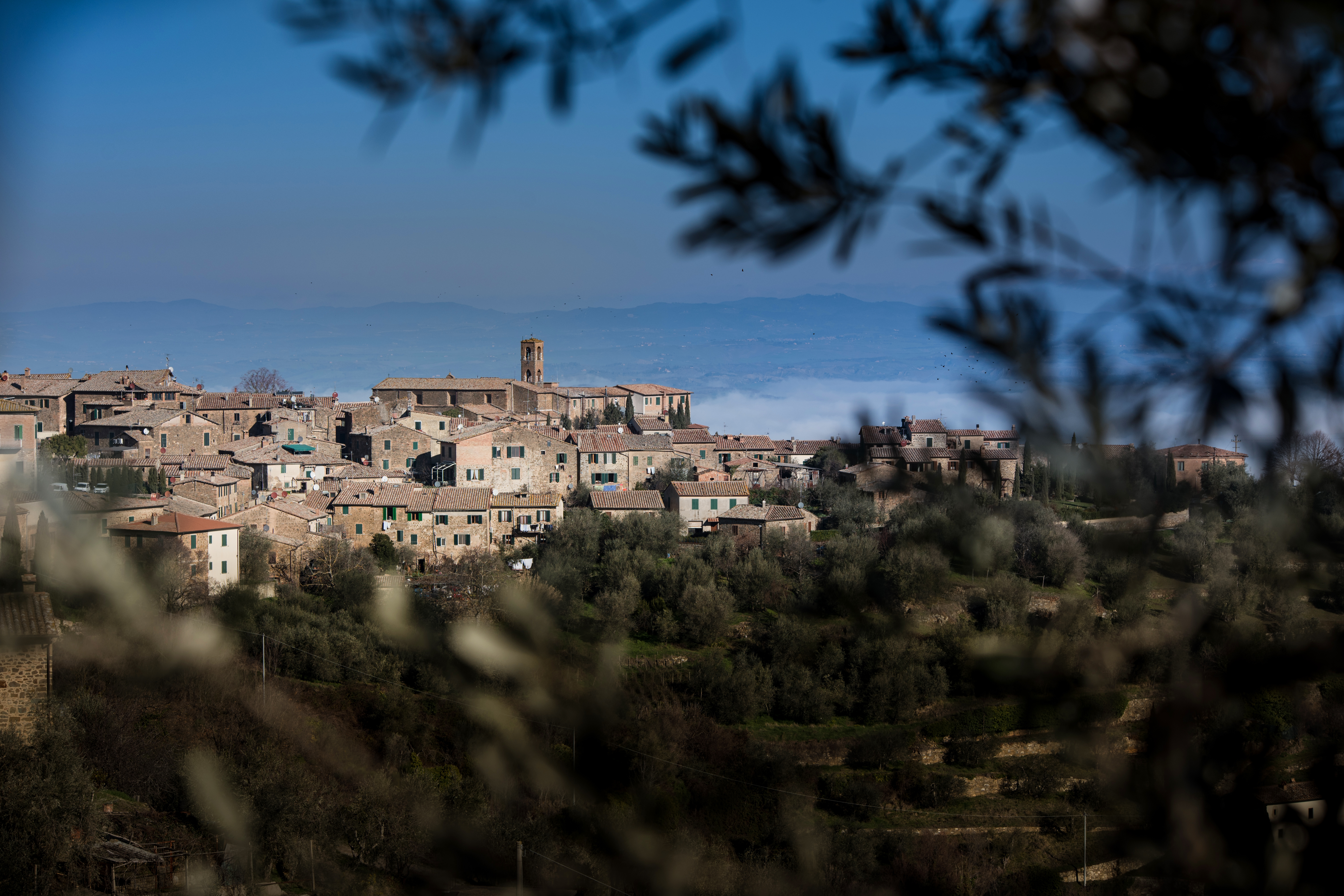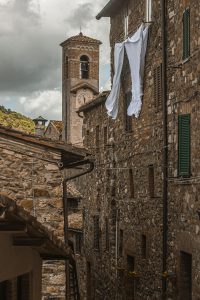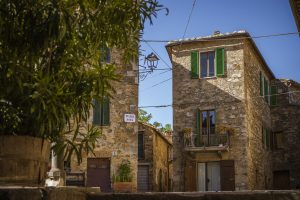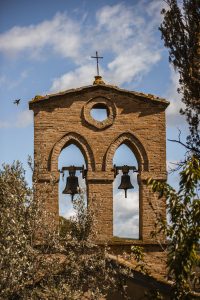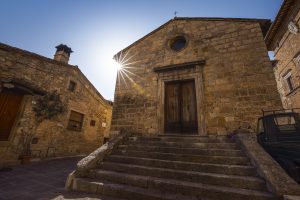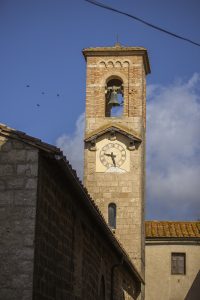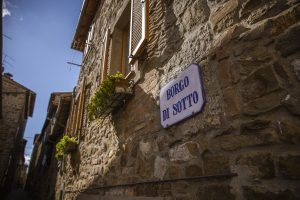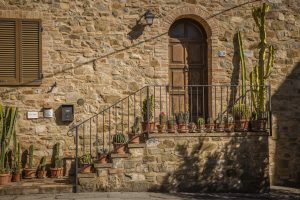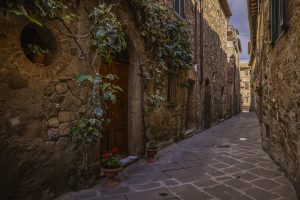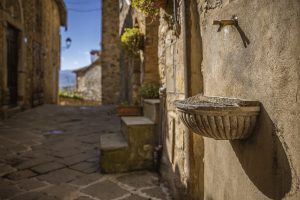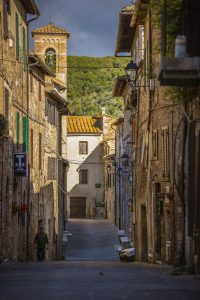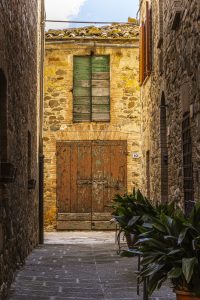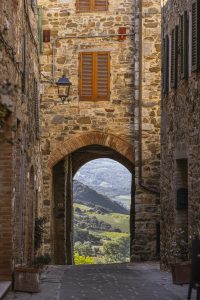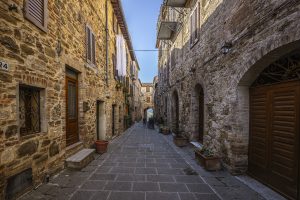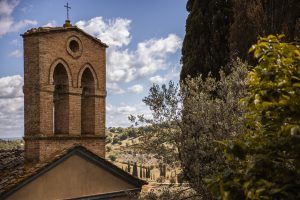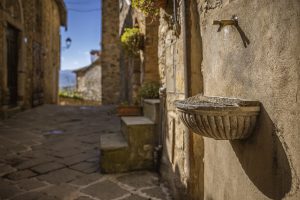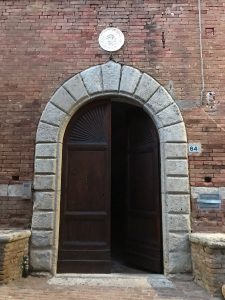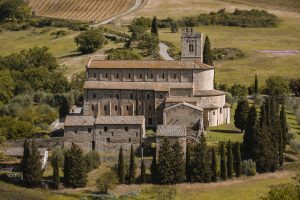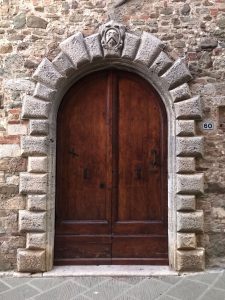VAL D’ORCIA
Val D’Orcia became a UNESCO World Heritage Site for its cultural landscape in 2004 based on these criteria:
(Criteria IV): “Val D’Orcia is an exceptional example of the pre-Renaissance landscape redesign, illustrating the ideals of good government and the aesthetic research which have guided its conception.
(Criteria VI): “Val D’Orcia, celebrated by painters of the Sienese School, became an icon of the countryside which deeply influenced the development of the landscape perspective”.
CASTELNUOVO DELL’ABATE (Montalcino)
Where we are
Castelnuovo dell’Abate belongs to the municipality of Montalcino (Val D’Orcia), in the province of Siena, region ‘Toscana’. It is a medieval village that dominates the Abbey of Sant’Antimo and rises to 385 meters above sea level
From Castelnuovo dell’Abate to:
| Montalcino | 9 km | 12 mins |
| Pienza | 30 km | 40 mins |
| San Quirico D’Orcia | 23 km | 25 mins |
| Bagno Vignoni (Terme) | 20 km | 25 mins |
| Cappella di Vitaleta | 42 km | 45 mins |
| Siena | 51 km | 1 hour |
| Arezzo | 95 km | 1 hour and 30 mins |
| Firenze | 122 km | 2 hours |
Castelnuovo dell’Abate
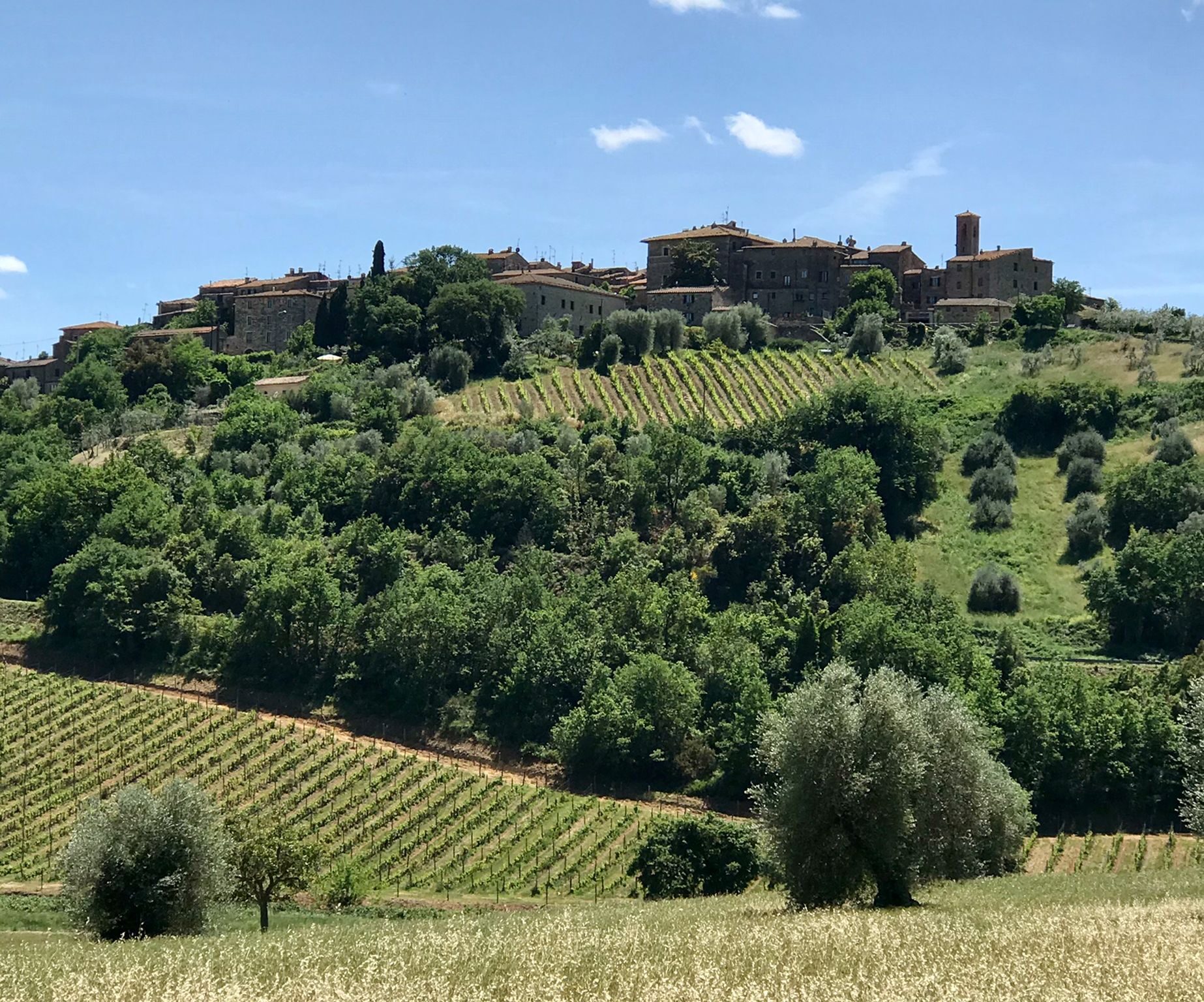
Castelnuovo dell’Abate (389 meters above sea level) is a small village located in the town of Montalcino, in Val d’Orcia, which preserves its medieval appearance. Leaning on a hill covered with olive trees, vines and cypresses, the village dominates the beautiful Abbey of Sant’Antimo
In the Middle Ages, Castelnuovo dell’Abate was a small fort that belonged to the abbot of the abbey of Sant’Antimo, who built his residence there, which then became the bishop’s residence in 1462 with the suppression of the abbey. of Montalcino.
Inside the small village are worth visiting the Palazzo del Vescovo, built in the fifteenth century on the wishes of Fabio Vecchi, bishop of Montalcino, and Palazzo Bellanti, partly drafts, of late Renaissance structure with brick facade. The village also preserves the remains of walls erected by Siena in 1360.
The parish church of medieval origin and restored in 1597 is dedicated to Saints Philip and James and still shows the original Romanesque structures. Inside there are some frescoes by Ventura Salimbeni from the late 16th century.
Around the village in the past there were several white alabaster quarries now in disuse while currently in the surrounding hills the famous Brunello di Montalcino wine is produced.
Sant’Antimo Abbey
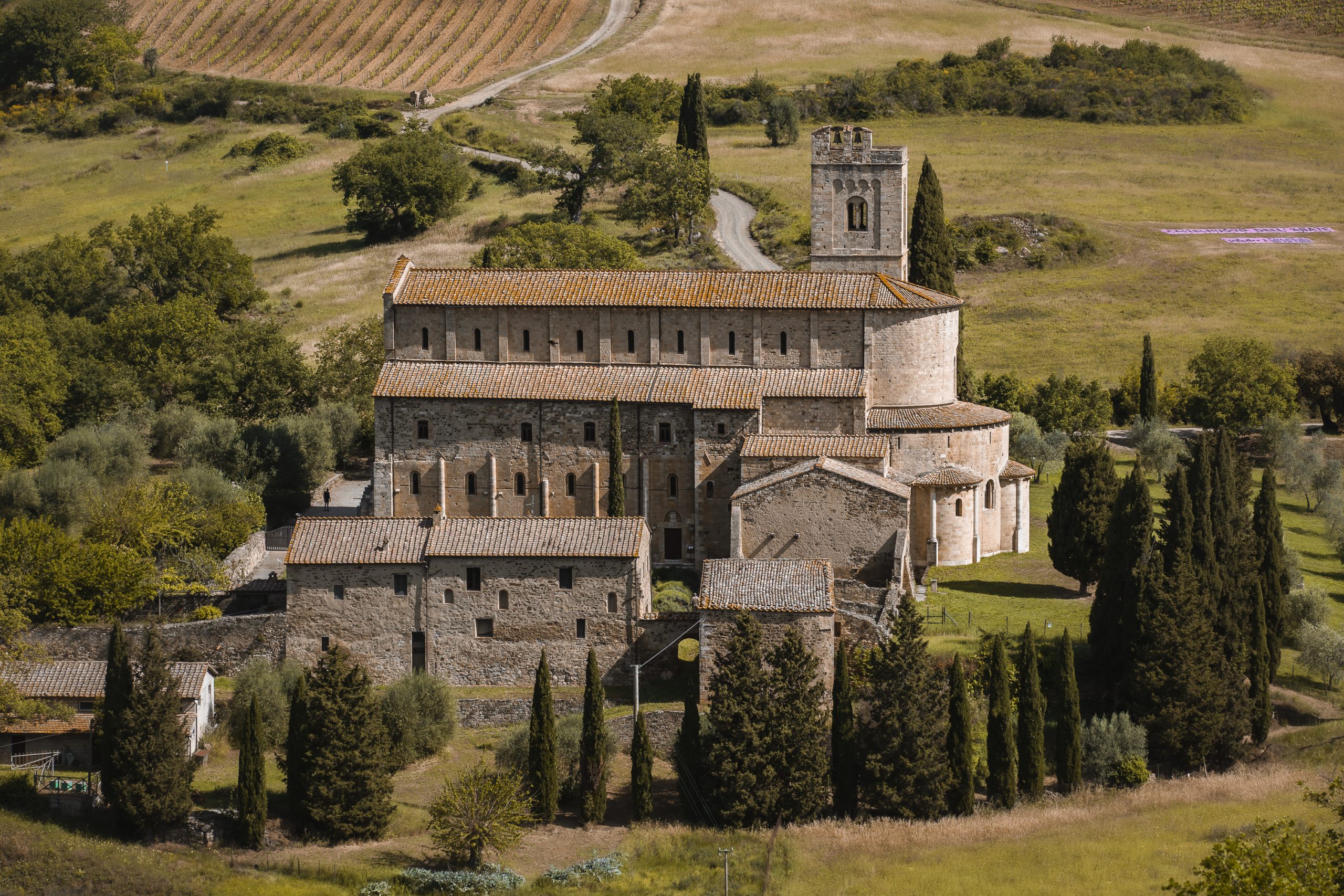
Sant’Antimo is an ancient abbey that has been inhabited by Benedictine monks for centuries. The present church was built in the early 12th century but the abbey’s origins actually stretch back much further in time. It is said to have been founded in the 9th century at the time of the Holy Roman EmperorCharlemagne, who is credited with founding the chapel – known as the Carolingian Chapel – now used as the sacristy or vestry. In any event, the abbey certainly existed by 814 when Charlemagne’s successor, the Emperor Louis the Pious, issued a diploma endowing it with both property and privileges. We know that work began on the present church in the 12th century thanks to the Charta Lapidaria, an inscription on the steps of the high altar commemorating a donation made to the abbey by the Ardengheschi family in 1118. That year marked the start of the abbey’s heyday and it was soon to become one of the wealthiest and most important religious institutions in the region, holding sway over numerous parishes, castles and manors.
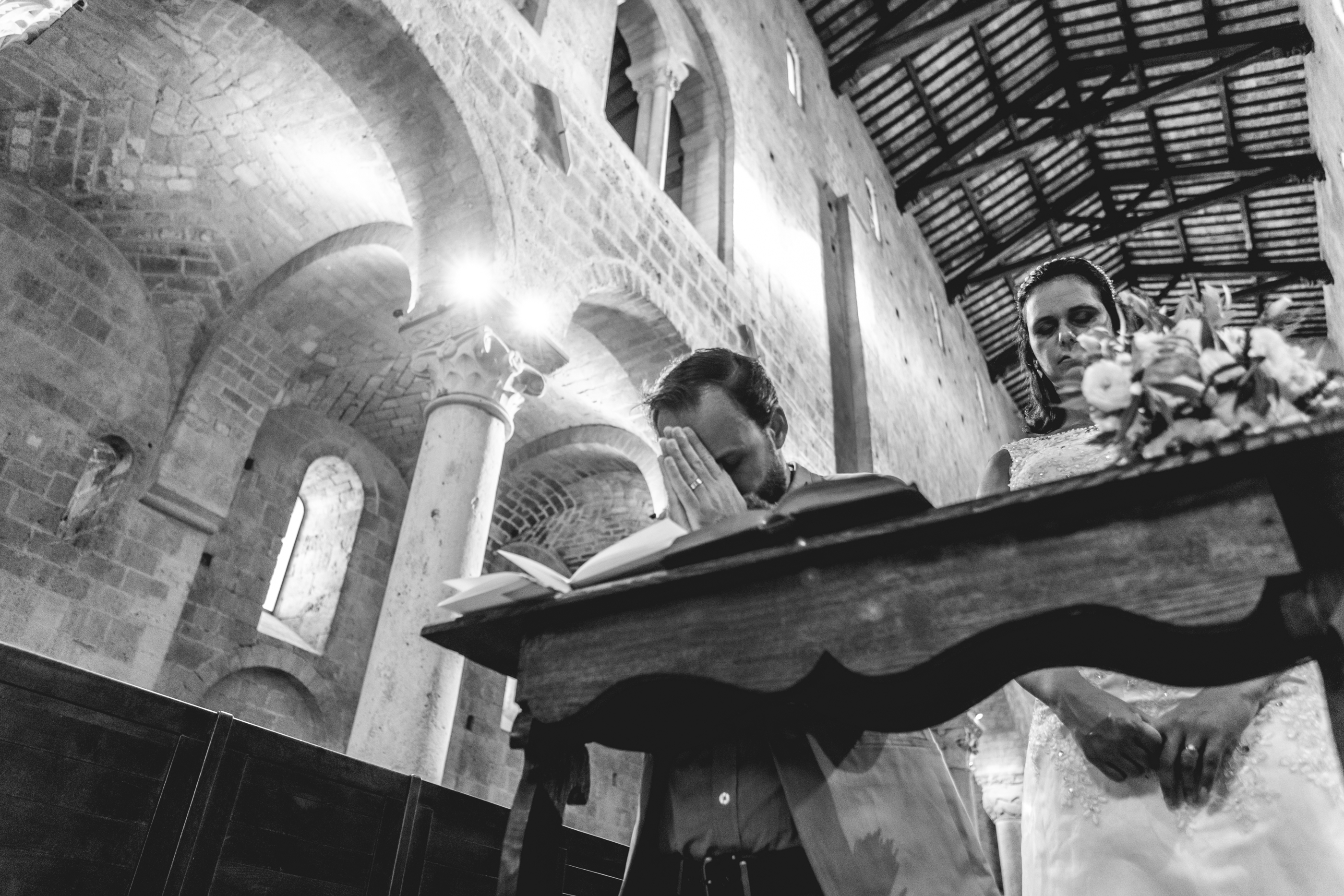
During what is known as the “communal era” marking the birth of the Italian city state, however, it was to lose a number of its possessions including the castle of Montalcino, whose strategic emplacement inevitably made it a target of Siena’s expansionist ambitions in southern Tuscany. By the end of the 13th century such severe inroads had been made into the abbey’s property that it was only a shadow of its former self. To remedy the situation, Pope Nicholas IV gave the abbey to the Hermits of St. William, a reformed branch of the Benedictine Order, but despite the pope’s intervention Sant’Antimo had irremediably lost its ancient grandeur, and so in 1461 Pope Pius II suppressed the abbey and incorporated it into the newly-created Diocese of Montalcino and Pienza. By this time the abbey was beginning to look extremely dilapidated.
Several of the buildings around the cloister had collapsed and their stones were used to build the neighbouring village of Castelnuovo dell’Abate. It wasn’t until 1870 that a lengthy restoration campaign got under way and the architect Giuseppe Partini restored the church to the condition in which we can admire it today.
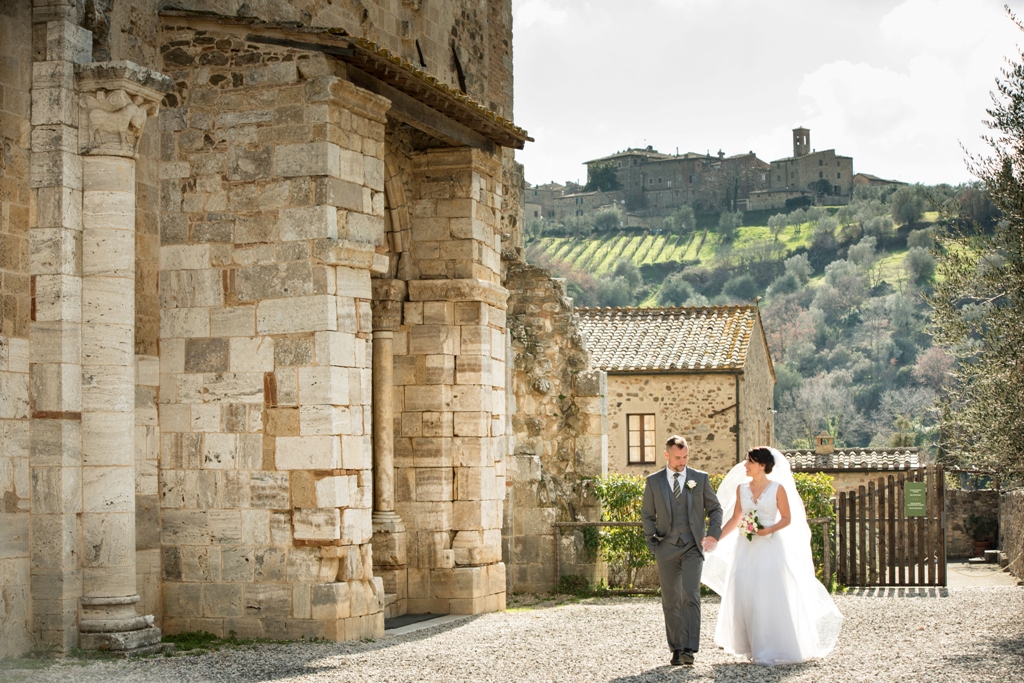
Montalcino
This town has been made rich and famous by its Brunello namesake, one of the world’s best red wines.
But Montalcino is actually a town full of artistic treasures, perched above its 3000 hectares of vineyards (1500 of which are dedicated to Brunello).
Wedged between the Ombrone and Orcia valleys, this historical centre is dominated by the Rocca built in 1361 to mark the passage of Montalcino under Siena’s dominion. The view from its walls stretches toward Monte Amiata, across the Crete to Siena, across Val d’Orcia and the hills of Maremma, which in the words of poet Mario Luzi, here begin their “sprint toward the sea”.
Montalcino is also symbolised by the slender tower that graces its town hall, built between the 13th and 14th centuries.
Below lie the main square known as Piazza del Popolo and its characteristic gothic loggia.
Also worth visiting in town are the churches dedicated to Sant’Egidio (14th century) and the Museo Civico e Diocesano, whose exhibits include painting and scultpure ranging from the 1300s to the 1900s and glazed terracotta from the Della Robbia workshop.
The surrounding country roads wind through vineyards to Torrenieri, Sant’Angelo in Colle and Poggio alle Mura.
By way of Castelnuovo dell’Abate a road leads to the splendid Sant’Antimo abbey, one of Italy’s most memorable works of Romanesque architecture.
